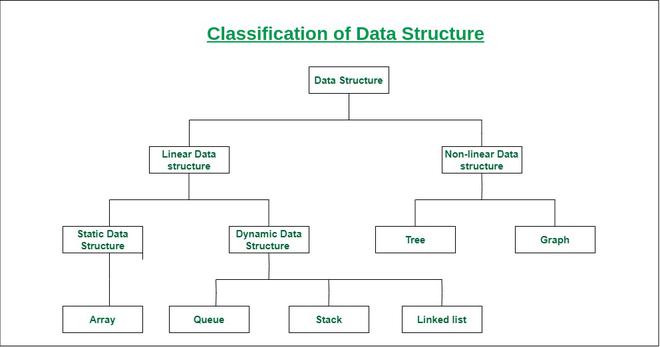What is Data Structures
Data structures play a crucial role in computing by facilitating the efficient organization of data in memory. They are fundamental components responsible for structuring, manipulating, accessing, and preserving data effectively. However, the significance of data structures goes beyond mere organization. Each type of data structure possesses unique characteristics, functionalities, applications, as well as strengths and weaknesses.
In essence, a data structure serves as a mechanism for storing and arranging data systematically. It establishes a framework for data storage on a computer, enabling streamlined access and modification processes. Data structures not only aid in data organization but also play a pivotal role in data processing, retrieval, and retention. The utilization of various basic and advanced data structures is pervasive across nearly all software programs and systems. Therefore, a comprehensive understanding of data structures is imperative for proficient programming and software development.
Categories of Data Structure:
Data structures play a crucial role in organizing, processing, and storing data efficiently. They are fundamental components in various software applications and systems, aiding in tasks like data processing, retrieval, and storage. Understanding a wide range of basic and advanced data structures is essential for proficient programming and successful software development.
Categories of Data Structures:
Data structures serve diverse purposes in our daily lives, offering solutions to a multitude of mathematical and logical challenges. They enable the organization and manipulation of vast amounts of data swiftly and effectively. Let's delve into the distinct types of data structures utilized in various scenarios to address specific needs and optimize data handling processes.

Linear data structure: A linear data structure arranges data elements sequentially, with each element connected to its previous and next adjacent elements. This structure facilitates easy traversal and manipulation of data. Examples of linear data structures include arrays, stacks, queues, and linked lists.
Static data structure: A static data structure has a fixed memory size, making it straightforward to access elements within it. An array is a classic example of a static data structure.
Dynamic data structure: Dynamic data structures have a size that is not fixed, allowing for updates during runtime. This flexibility in size adjustment can enhance the memory efficiency of the code. Examples of dynamic data structures include queues and stacks.
Non-linear data structure: Non-linear data structures do not arrange data elements sequentially. Traversal of all elements in a non-linear structure may require multiple passes. Trees and graphs are common examples of non-linear data structures that offer diverse ways to organize and access data efficiently.
Importance Of Data structure :
The structure of data and the algorithm's design are closely intertwined. It is crucial for data presentation to be clear and comprehensible, facilitating efficient implementation by developers and users alike.
Data structures play a vital role in organizing, retrieving, managing, and storing data effectively. They offer a systematic approach to handling data. Below are some key reasons highlighting the importance of data structures:
Ease of Data Structure Modification: Data structures should allow for straightforward modifications.
Time Efficiency: Efficient data structures reduce the time required for operations.
Optimized Memory Usage: Data structures should help in saving storage memory space.
Simplified Data Representation: Clear and intuitive data representation is essential for ease of understanding.
Efficient Access to Large Databases: Data structures should enable quick and efficient access to vast amounts of data stored in databases.